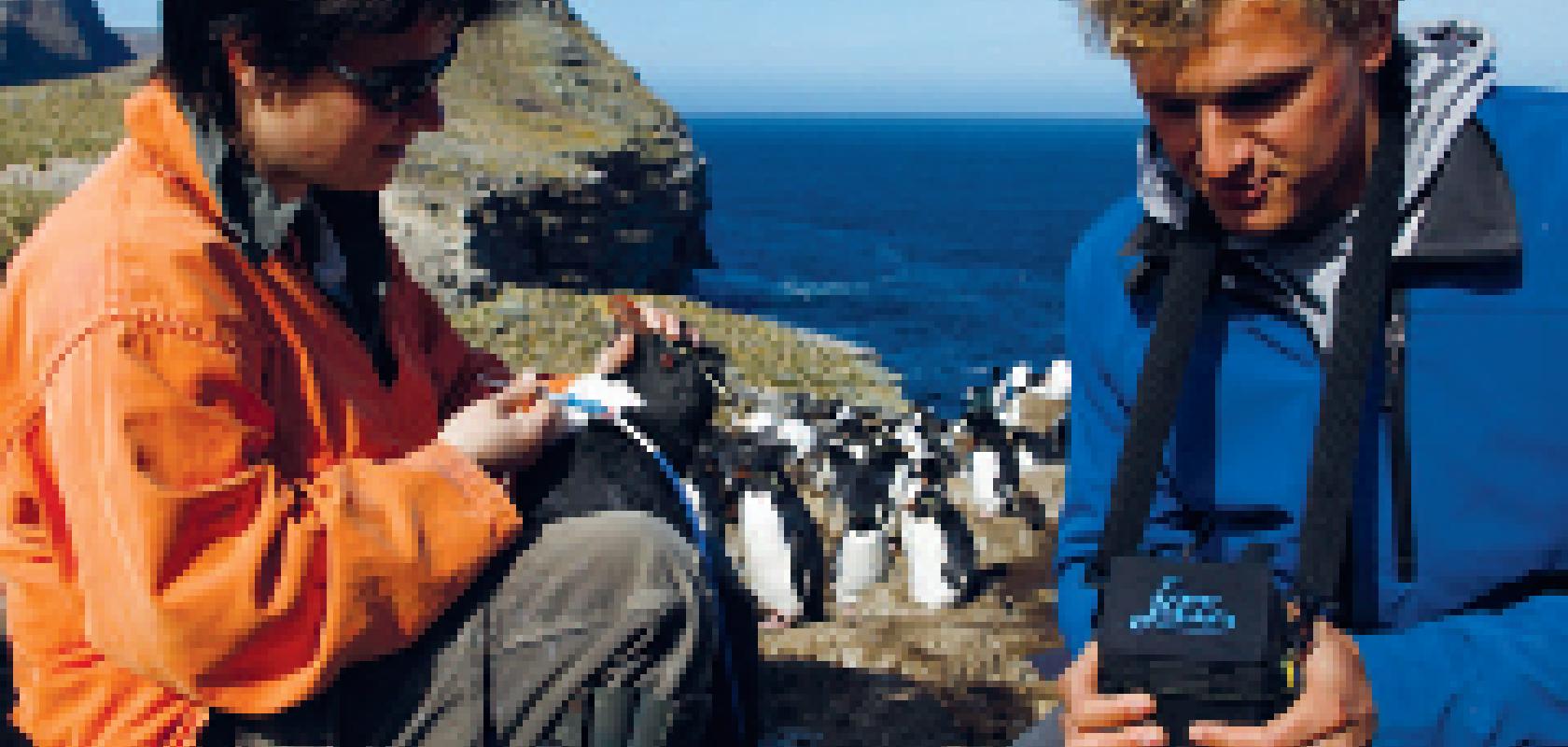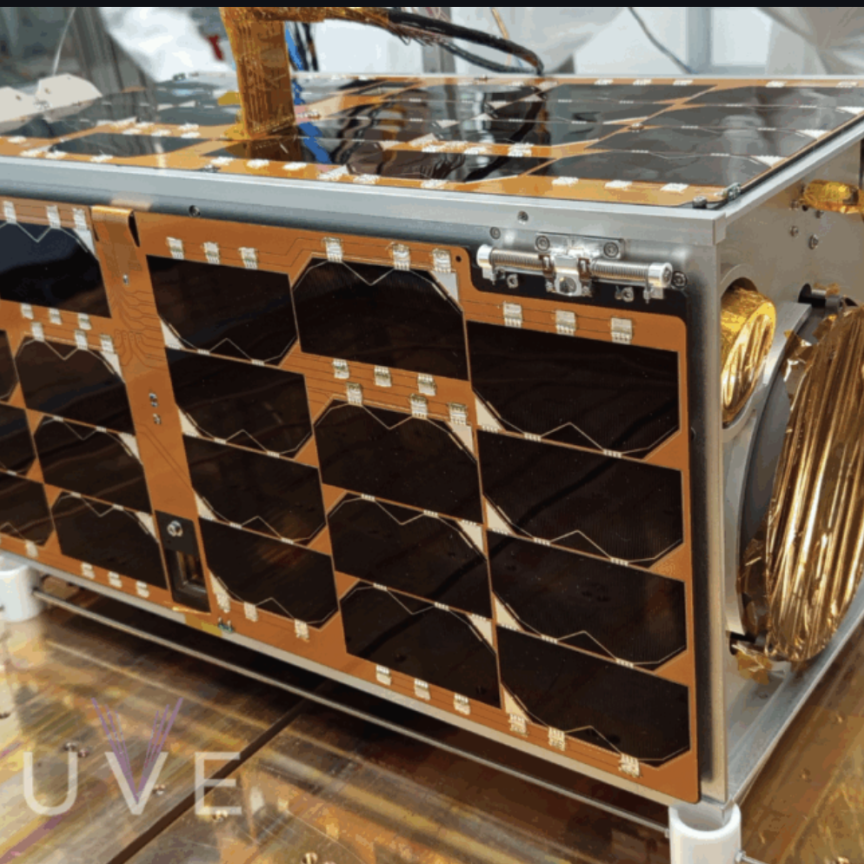When it comes to spectroscopy in the field, portability, flexibility and ease of use are critical.
The first portable spectroscopy systems used a compact microspectrometer, connected to a laptop computer – but the latest generation of systems has taken advantage of powerful compact microprocessors and wireless handheld devices to eliminate the need for a PC in the field altogether.
Modular systems such as the Ocean Optics Jaz spectrometer integrate components into a single hand-held stack that otherwise would have to be carried separately: the spectrometer, microprocessor with low-power display, light source, battery pack and Ethernet capability for remote measurements.
Rob Morris, marketing operations manager at Ocean Optics, based in Florida, explains: ‘Spectral data can be acquired, processed and stored onboard the unit or transmitted via Ethernet or USB to another device. Reflection probes and other sampling optics connect easily to the Jaz, keeping the overall system footprint compact and manageable.’
He continues: ‘The inherent flexibility of the Jaz spectrometer can be exploited for a number of UV-Vis bioreflectance applications simply by mixing and matching Jaz modules and selecting sampling optics most appropriate for the application. A high-intensity, low-power pulsed xenon source and options for handling system power requirements make Jaz an extremely reliable choice for field and other measurements.’
Many researchers are using spectrometers such as the Jaz to study biological samples exhibiting UV-Vis reflectivity and colour characteristics. Within the biological sphere, applications are diverse. The spectrometer has an inherent flexibility and can be exploited for a number of UV-Vis bioreflectance applications simply by mixing and matching modules and selecting sampling optics most appropriate for the application.
Morris continues: ‘Among some species of birds, insects and reptiles, UV reflectance and colour play a role in mating behaviour, recognising species and assessing predator risk. Colour as an indicator of fruit and vegetable maturation is significant; also, chlorophyll distribution in crops, measured using reflectance, can tell growers something about optimum fertilisation. Many more similar applications, both in the field and in the lab, can be classified as bioreflectance applications.’
A typical Jaz configuration for portable UV-Vis reflectance comprises the Jaz spectrometer set from 200-850nm, with a 25µm slit and detector collection lens. Also installed in the Jaz stack is a battery module, which has two slots for SD card data storage, and an integrated high-intensity pulsed xenon light source with up to four hours’ battery life on a single charge. Depending on experiment considerations, other options to add are an Ethernet module and a software application that can be used to calculate Photosynthetically Active Radiation (PAR) values of horticultural samples.
Size and simplicity are also important to Applied Photonics, a small, nine-person outfit based in Skipton, UK. While the company was formed to make larger, bespoke laser-induced breakdown spectroscopy (LIBS) systems, the company has in recent years had more success selling portable systems. Typical customers for its LIBScan 25+ portable LIBS system include research groups, application scientists and application engineers who want to use LIBS and develop it further themselves in terms of analytical methodology and calibration for their particular application.
Managing director Andrew Whitehouse tells Electro Optics: ‘We do get potential customers who want us to make our portable systems suitable for a specific function – for example, positive metal identification – but presently we shy away from that because not only is there a significant amount of development work needed to make a LIBS system suitable for one particular application, the market for a single-application LIBS system is currently very small. We believe the current market supports a flexible, versatile design which can be tailored to suit a wide variety of applications. This is why we have adopted a modular design in our LIBS products, and we believe that in doing so our LIBS products provide a high degree of versatility.’
Off-the-shelf LIBS systems all adopt a modular design approach, says Whitehouse, because once a customer has bought the system its configuration is application-specific: ‘We have to make it as easy as possible for the customer to pick and choose what modules they want, and configure an instrument that meets their application requirements and budget.’
Simplicity and modularity on this scale have really only been available for a relatively short period.
Whitehouse says: ‘The basic building blocks for LIBS have been available for a long time – an Nd:YAG laser, or some other form of pulsed laser capable of producing the necessary sample ablation and plasma, some optics, a spectrometer and a computer.
‘There’s a variety of spectrometers that can be used, but the compact and low-cost ones from companies such as Avantes have really opened up opportunities whereby you can package a LIBS product compact enough, and relatively low-priced, so that it can be offered as an off-the-shelf product. The lasers we use are bought in for many of our products, but with the LIBScan 25+ and a few others we use a very compact laser which we have developed ourselves.’
The LIBScan 25+ uses a 50mJ laser that can operate at up to 1Hz – so relatively slow, admits Whitehouse, but it is a truly portable system, weighing around 15kg and running off a self-contained lithium ion battery.
So what of the future – will systems continue to shrink in size? Whitehouse says: ‘It would be great if LIBS systems continue to get smaller, it would be nice if they were pocket-sized! However, it’s not easy to make spectrometers shrink while maintaining the required performance. The laser power supply could be made smaller, and the laser itself as well, so there is scope for further reductions in size.
‘But they will not shrink massively any time soon. It remains a niche market, so it’s difficult to justify extra development costs if the systems are doing their job well already.’
StellarNet has released a series of updated spectrometers configured for Raman applications to identify liquid, solid, or powder samples.
They include enhanced CCD array detectors for 785nm Raman or cooled 1024 element InGaAs photodiode arrays for 1064nm Raman where interference from sample fluorescence is minimised and virtually non-existent.
The StellarNet Raman-SR and Raman-HR spectrometers are standard and high-resolution models achieving 8cm-1 and 4cm-1 resolution respectively. For 1064nm Raman, an InGaAs detector is installed to cool the detector. These Raman spectrometers have no moving parts and are permanently aligned for shock-proof durability. SMA-905 optical input to spectrometer allows attachment of Raman probes or fibre optic sample accessories.
StellarNet applications scientist Michelle Ritchie explains: ‘The fibre optically-coupled Raman spectrometer series is extremely ruggedised and compact for portable and field applications, and
USB2 connection to PC for power and data is quick and easy. The powerful SpectraWiz spectrometer software is provided
free of charge with every Raman spectrometer instrument; it has built-in applications for spectroradiometry, spectrocolourimetry, ChemWiz chemistry lab concentration analyser, and UV level monitors.’


